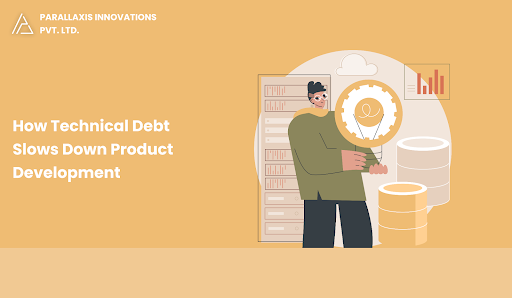Innovations
In the fast-paced world of software development, the pressure to deliver new features and updates quickly can lead teams to make compromises. These compromises...

In the fast-paced world of software development, the pressure to deliver new features and updates quickly can lead teams to make compromises. These compromises often manifest as technical debt: shortcuts taken during the development process that prioritize immediate results over long-term quality. While technical debt may seem like a minor issue at first, it can accumulate and significantly slow down product development over time. In this blog post, we will explore how technical debt impacts the development process and the various ways it can hinder progress.
Technical debt is a metaphor that describes the trade-offs made when development teams prioritize speed and efficiency over code quality and maintainability. Just like financial debt, technical debt incurs interest over time, making it increasingly costly to resolve. It can take many forms, including poorly written code, lack of documentation, outdated technologies, and insufficient testing.
Increased Maintenance Efforts:
As technical debt accumulates, developers may find themselves spending more time fixing bugs and addressing issues related to previous shortcuts. This increased maintenance effort diverts resources away from new feature development, slowing down the overall product development cycle.
Complex Codebases:
Technical debt often leads to complex and convoluted codebases that are difficult to navigate and understand. When developers struggle to comprehend the code, it takes longer to implement changes or add new features. This complexity can create a bottleneck in the development process, hindering progress.
Frequent Bugs and Regressions:
A codebase laden with technical debt is more prone to bugs and regressions. As developers introduce new features, they may inadvertently break existing functionality due to the lack of proper testing and documentation. The need to constantly fix bugs can slow down development and lead to frustration among team members.
Longer Onboarding Times:
New developers joining the team may face a steep learning curve when working with a codebase filled with technical debt. The lack of clear documentation and the complexity of the code can result in longer onboarding times, delaying their ability to contribute effectively to the project.
Reduced Developer Productivity:
When developers are bogged down by technical debt, their productivity can suffer. The time spent dealing with existing issues and navigating a convoluted codebase can lead to frustration and burnout, ultimately impacting the team’s ability to deliver new features on time.
Slower Response to Market Changes:
In a competitive landscape, the ability to respond quickly to market changes and customer feedback is crucial. Technical debt can hinder a team’s agility, making it difficult to pivot or adapt to new requirements. This can result in missed opportunities and a loss of competitive advantage.
Increased Risk of Project Failure:
As technical debt accumulates, the risk of project failure increases. A codebase that is difficult to maintain and prone to bugs can lead to significant delays and cost overruns. In extreme cases, teams may find themselves unable to deliver a viable product, resulting in wasted resources and lost investment.
Impact on Team Morale:
Working with a codebase riddled with technical debt can lead to frustration and decreased morale among developers. When team members feel overwhelmed by the challenges posed by technical debt, it can create a toxic work environment and lead to higher turnover rates.
To prevent technical debt from slowing down product development, organisations can implement several strategies:
Prioritize Code Quality:
Emphasise the importance of writing clean, maintainable code and conducting thorough testing before deploying new features. Encourage developers to adhere to coding standards and best practices.
Allocate Time for Refactoring:
Set aside dedicated time in your development cycle for refactoring and addressing technical debt. This can be done during sprint planning or as part of regular maintenance tasks.
Implement Automated Testing:
Invest in automated testing to catch bugs early and ensure that new changes do not introduce regressions. A robust testing suite can help maintain code quality and reduce the likelihood of accumulating technical debt.
Maintain Clear Documentation:
Encourage developers to document their code and decisions thoroughly. Well-documented code is easier to understand and maintain, reducing the risk of technical debt accumulating due to misunderstandings.
Conduct Regular Assessments:
Regularly assess your codebase to identify areas of technical debt. Use tools that can help measure code quality, track vulnerabilities, and provide insights into potential issues.
Foster a Culture of Continuous Improvement:
Encourage a culture that values continuous improvement and learning. Promote open discussions about technical debt and its implications, and empower team members to take ownership of addressing it.
Technical debt is a common challenge in software development, but it doesn’t have to be detrimental to your product development process. By understanding how technical debt slows down development and implementing strategies to manage it effectively, organisations can maintain a healthy codebase and foster a culture of quality.
Addressing technical debt is not just about fixing problems; it’s about creating a sustainable development process that allows teams to innovate and grow without being hindered by the weight of past decisions. By prioritizing code quality and investing in long-term solutions, organizations can ensure that technical debt does not impede their ability to deliver high-quality